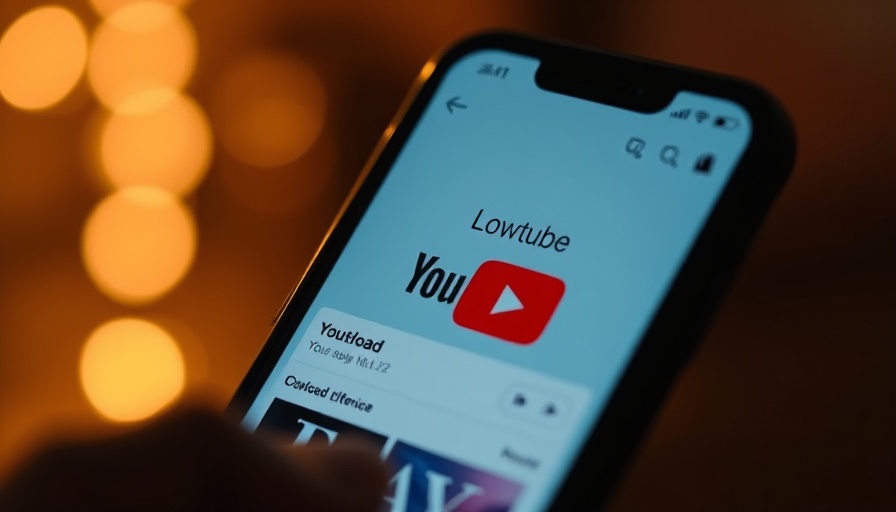
The End of Online Monoculture: A New Era of Content Diversity
In the digital realm, content has often been dominated by prevalent trends, leading to a phenomenon referred to as online monoculture. Recent updates from YouTube indicate a significant shift away from this homogenization, as diverse voices and niches gain momentum and visibility on the platform. This evolution could mark the end of the era where a few viral hits overshadow all other forms of content.
Understanding YouTube's Algorithm Changes
YouTube's algorithm is the lifeblood of the platform, determining what users see and how creators can reach their audiences. The latest modifications seem geared toward promoting individualized content rather than general trending videos, which is crucial for fostering a richer array of topics and styles. By adjusting algorithmic focus, YouTube acknowledges that audiences crave more diverse content that resonates with their unique interests.
Why Online Monoculture No Longer Holds Appeal
Monoculture may have simplified content production and consumption, but it also stifled creativity. With algorithms favoring only a handful of popular themes, many potential creative endeavors were pushed into obscurity. As audience interests have diversely expanded over the past few years—particularly in niche markets—the appetite for more varied content has surged. This cultural shift aligns with rising sentiments of individual expression and authenticity among viewers.
Dive into Niche Content: Opportunities for Creators
For creators, the current shift opens up pathways to explore less mainstream genres or topics. This change not only benefits the content producers by allowing them to express their creativity freely but also enriches viewers' experiences. Audiences are now able to connect with content that aligns more closely with their unique interests, fostering a sense of community among niche groups.
Future Predictions: What Lies Ahead for Content Creation
Experts predict that as YouTube continues to evolve, there will be more emphasis on diversifying content. This will likely lead to improved algorithms that prioritize viewer engagement and relevance over sheer popularity. As creators experiment with innovative styles and subject matters, it's crucial for platforms to adapt and support this creativity. Overall, the future of content creation appears increasingly decentralized, allowing for richer storytelling across an array of formats.
How Consumers Are Influencing Content Trends
Today’s consumers expect engagement and personalization from digital content. They are more willing to explore unconventional topics but seek which speak to their identities or experiences. This consumer-driven change demonstrates that online platforms must actively listen to their audiences to thrive. As more viewers express their preferences, content trends will inevitably shift away from a one-size-fits-all approach.
The Role of Community in Content Creation
As communities grow around specialized interests, creators can benefit from this organic support. Communities that engage deeply with specific subjects or styles often create strong bonds, which enhances loyalty and retention. Platforms like YouTube can harness these connections by promoting creators who cater to distinct communities, facilitating the new era of content diversity.
In conclusion, the transformation occurring on YouTube reflects a broader societal change toward diversity and individual input in digital spaces. As we observe the decline of online monoculture, we can anticipate not only the flourishing of varied content but also a vibrant community of creators and consumers willing to explore new perspectives. By adapting to these changes, creators and platforms alike can play vital roles in redefining the digital narrative.
 Add Row
Add Row  Add
Add 




Write A Comment